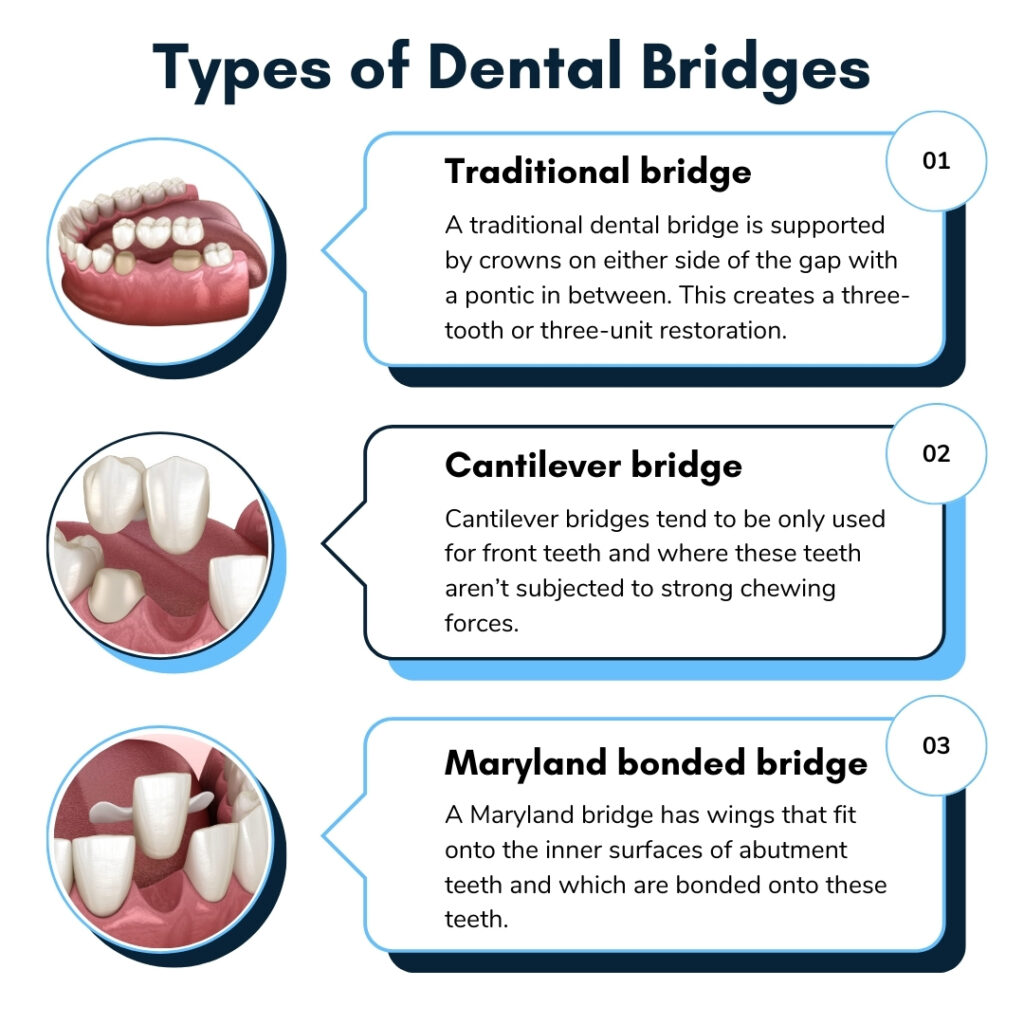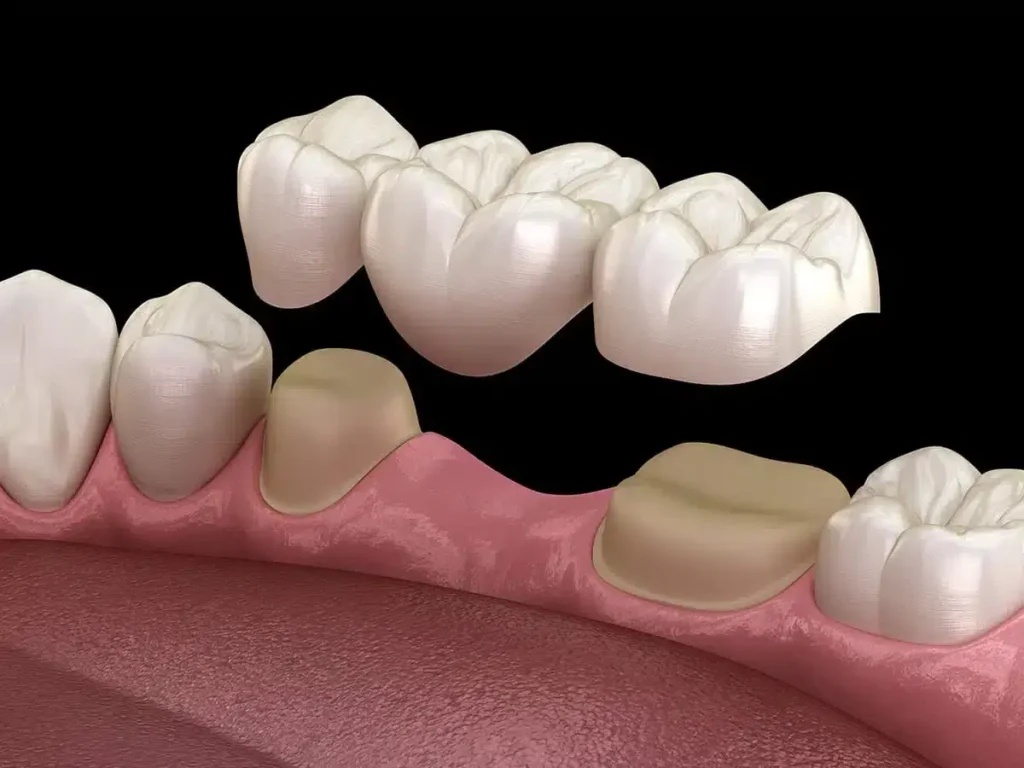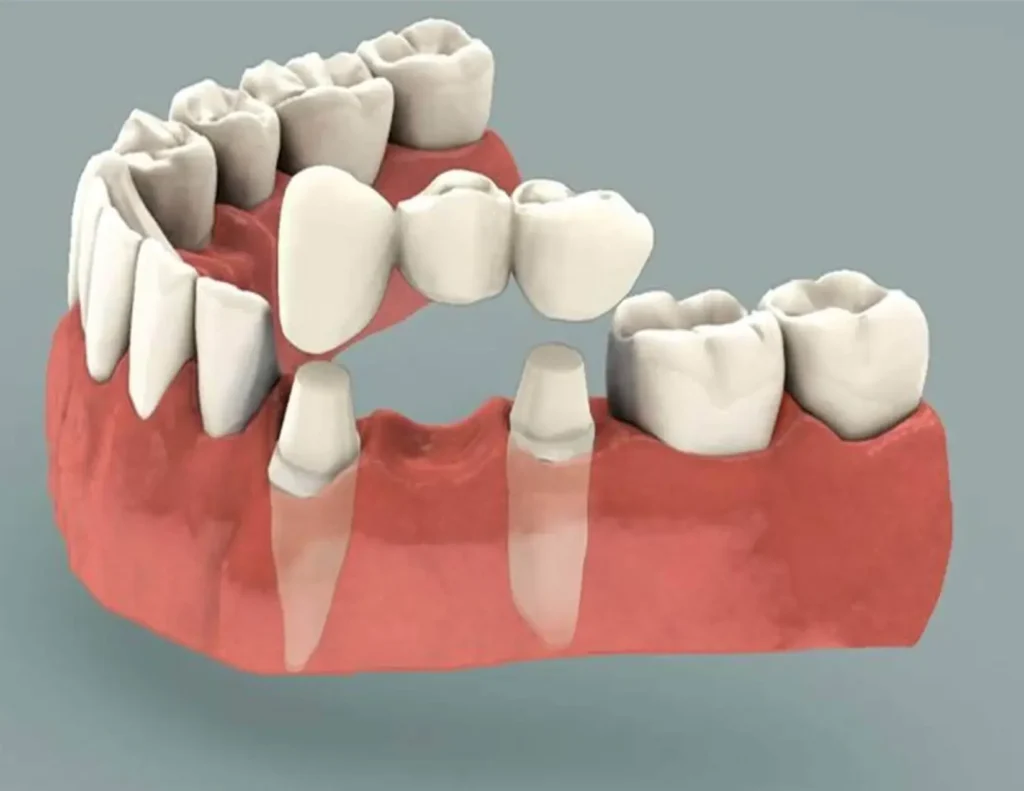Blog
Family & Cosmetic Dentistry | Located in Savannah & Richmond Hill
July 4, 2024
What is a Dental Bridge: Comprehensive Guide
Dental bridges are a common dental solution for replacing missing teeth, offering both functional and aesthetic benefits. This guide explores all aspects of dental bridges, from types and procedures to benefits and care. Understanding dental bridges is essential for making informed decisions about oral health, as they provide a crucial solution to prevent the complications associated with missing teeth.

What is a Dental Bridge?
A dental bridge is a prosthetic device used to replace one or more missing teeth by anchoring to the adjacent natural teeth or implants. It helps restore the function and appearance of the teeth. This dental appliance literally bridges the gap left by missing teeth, using one or more artificial teeth (pontics) anchored by crowns on the adjacent teeth (abutments). By filling the empty spaces, dental bridges prevent the remaining teeth from shifting, which can lead to misalignment and further dental issues. Furthermore, they improve your ability to chew and speak properly, which can be compromised when teeth are missing. Dental bridges are designed to blend seamlessly with your natural teeth, enhancing both function and aesthetics.
Types of Dental Bridges
There are several types of dental bridges, each suited to different needs and conditions. The main types include traditional, cantilever, Maryland, and implant-supported bridges.
Traditional Dental Bridge: A traditional dental bridge involves creating crowns for the teeth on either side of the missing tooth and placing a pontic (false tooth) in between. This type is widely used due to its strength and stability. It requires healthy adjacent teeth to act as supports. The procedure typically involves two visits to the dentist: the first to prepare the abutment teeth and take impressions, and the second to place the permanent bridge.
Cantilever Dental Bridge: Cantilever bridges are used when there are adjacent teeth on only one side of the missing tooth or teeth. This type of bridge is less common and typically used in areas of the mouth that are under less stress from chewing. The cantilever bridge is anchored by a single crown on one side, making it suitable for situations where there is only one natural tooth available to support the bridge.
Maryland Dental Bridge: Also known as resin-bonded bridges, Maryland bridges use a metal or porcelain framework bonded to the back of adjacent teeth. They are often used for front teeth due to their minimal invasiveness. This type of bridge requires less preparation of the neighboring teeth since it relies on metal or porcelain wings that are bonded to the back of the adjacent teeth.
Implant-Supported Bridge: Implant-supported bridges are anchored to dental implants rather than natural teeth, making them a more stable and long-lasting solution. This type is ideal for people who are missing several teeth in a row. The procedure involves placing implants in the jawbone, which will serve as the anchors for the bridge. This process may take several months as it requires the implants to fuse with the bone before the bridge can be attached.

Procedure Details
The procedure for getting a dental bridge typically involves multiple visits to the dentist. Initially, the abutment teeth are prepared by reshaping them to hold the crowns. Dental impressions are then taken to create a custom bridge. During this time, a temporary bridge may be placed to protect the exposed teeth and gums. Once the final bridge is ready, it is placed and adjusted for a perfect fit before being cemented in place. Local anesthesia is usually administered to ensure comfort during the procedure. The exact steps may vary depending on the type of bridge and the specific needs of the patient. For example, an implant-supported bridge requires surgical placement of the implants and a longer healing period before the bridge can be attached. Book an appointment with us to know more about dental bridge placement for you.
Risks and Benefits of Dental Bridges
Dental bridges offer numerous advantages, including restoring functionality in chewing and speaking, maintaining facial structure, and preventing the movement of adjacent teeth. They provide a natural-looking solution that can significantly enhance your smile and confidence. However, there are potential drawbacks to consider. The process involves modifying the healthy teeth adjacent to the gap, which can increase the risk of decay under the crowns. Additionally, if the abutment teeth are not strong enough, the bridge may fail. Proper oral hygiene is essential to prevent complications such as decay and gum disease. Regular dental check-ups are also crucial to monitor the condition of the bridge and the surrounding teeth.
Recovery and Aftercare
Recovery from a dental bridge procedure typically takes one to two weeks, although complete adjustment to the new bridge may take longer. During this period, it is important to follow your dentist’s aftercare instructions to ensure proper healing and avoid complications. Maintenance of a dental bridge involves brushing and flossing daily, using non-abrasive fluoride toothpaste, and regular dental check-ups. Special care should be taken to clean under the pontic to prevent plaque buildup. Using floss threaders or interproximal brushes can help maintain oral hygiene around the bridge. Avoiding hard or sticky foods can also prevent damage to the bridge.
Longevity of Dental Bridges
With proper care, dental bridges can last between 5 to 15 years. Regular maintenance and good oral hygiene are crucial for longevity. Factors that influence the lifespan of a dental bridge include the materials used, the quality of the dental work, and the patient’s oral hygiene habits. Dental bridges made from high-quality materials and placed by experienced professionals tend to last longer. Routine dental visits are essential to monitor the condition of the bridge and to address any issues promptly. Patients should be diligent in maintaining their oral health to ensure the longevity of their dental bridge.

Cost of Dental Bridges
The cost of dental bridges varies based on the type of bridge and the materials used. Without insurance, prices can range from $700 to $5,000 per tooth. Dental insurance may cover a portion of the cost, depending on the plan. Factors that affect the cost include the complexity of the procedure, the location of the dental practice, and the materials used for the bridge. Implant-supported bridges tend to be more expensive due to the surgical component and the use of implants. Patients should discuss the costs and payment options with their dentist to find a solution that fits their budget.
Alternatives to Dental Bridges
Alternatives to dental bridges include dentures and dental implants. Dentures are removable and cost-effective but less stable than bridges. They require regular cleaning and maintenance. Dental implants are a permanent and stable option but are more expensive and require surgery. Implants offer a more natural feel and can last a lifetime with proper care. Each option has its own advantages and disadvantages, and the best choice depends on individual needs and preferences. Patients should discuss all available options with their dentist to determine the most suitable treatment for their specific situation.
Common Problems and Solutions
Common problems with dental bridges include loosening, decay, and gum disease. Regular dental visits can address and fix loose bridges. If a bridge becomes loose, it can usually be re-cemented by the dentist. Proper oral hygiene and regular check-ups can prevent decay. Ensuring that the bridge and surrounding teeth are clean is crucial. Gum disease can affect the stability of the bridge, so regular cleaning and professional dental care are essential. If any issues arise, it is important to contact your dentist promptly to prevent further complications.

FAQs about Dental Bridges
How long do dental bridges last? Typically, dental bridges last between 5 to 15 years with proper care. The lifespan depends on factors such as the materials used, the quality of dental work, and the patient’s oral hygiene habits.
What are the disadvantages of a dental bridge? Potential disadvantages include the risk of decay under crowns, damage to abutment teeth, and the need for good oral hygiene. Bridges also require modification of healthy adjacent teeth.
What is the best type of dental bridge to get? The best type depends on individual needs, the size of the gap, and the condition of surrounding teeth. Consulting with a dentist can help determine the most suitable option.
Are dental bridges painful? The procedure involves local anesthesia, making it relatively pain-free. Some discomfort may occur during recovery, but this can be managed with pain relief medication as prescribed by the dentist.
Can a dental bridge be removed and recemented? Yes, but it depends on the condition of the bridge and the supporting teeth. If the bridge is loose, it can often be re-cemented by the dentist.
Which dental bridge is used for front teeth? Maryland bridges are often used for front teeth due to their aesthetic and minimal preparation requirements. They provide a natural appearance while preserving the structure of adjacent teeth.
Is a dental bridge better than an implant? It depends on various factors including cost, surgery preference, and the condition of adjacent teeth. Dental implants are more permanent but also more expensive and require a surgical procedure.
How do I care for my dental bridge? Brush and floss daily, use a fluoride toothpaste, and visit your dentist regularly for check-ups and professional cleanings. Special care should be taken to clean under the pontic.
Conclusion
Dental bridges are an effective solution for replacing missing teeth, offering both functional and aesthetic benefits. They can restore your smile, improve your ability to chew and speak, and prevent the movement of adjacent teeth. Proper care and maintenance are essential for the longevity of a dental bridge. Book an appointment with us to determine the best type of dental bridge for your needs and ensure proper care to maintain your bridge’s longevity.

